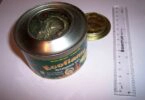If you are raising chickens with the intention of eating them, you need to know how to butcher a chicken. For some, the process is a little too much and they will hand off the responsibility to a mobile butcher or take the chickens in to be butchered. This adds a great deal of cost to the chicken and almost defeats the purpose of raising chickens for meat in the first place.
[the_ad_placement id=”in-text-1-type-r”]Butchering and preparing a chicken for the table is a valuable skill that you must possess. If you are ever in a situation where your chickens are the only option for a meal and there are no butchers available to take care of the processing, you have to know how to do it. There are some serious problems that can arise if you do not know what you are doing. Butchering and processing a chicken incorrectly can poison the meat.
Butchering a chicken isn’t nearly as bad as many people will assume it to be. It is a necessary evil and can be done humanely. The process of killing the bird is over within seconds. It is something that has been done for thousands of years. It is a part of the circle of life.

This article will go over the steps to butchering a chicken and getting it ready to store in your freezer or cook immediately.
Prepare for the butchering #1
Before you start the process, you need to have your tools ready. These are as follows:
- Sharp knife—do not even think about using a dull knife!! You could use a hatchet if you prefer
- A butcher block—an old stump will work as well
- A feed bag or burlap sack
- Lined garbage can
- Rags
- Bucket of bleach water
- Pot of boiling water ready to use
- Clean area for processing
- Garden hose—turned on and ready for use
- Optional–A stand and rope for hanging the birds for cleaning—this can be something as simple as a rope thrown over a tree branch
It is important you have all of your tools and materials at the ready. You don’t want to leave a chicken waiting or have a carcass or chicken heads lying on your chopping block. This will attract flies and bees. You must ensure you are as sanitary as possible as well as humane.
It is a good idea not to feed the chickens you will be butchering the night before. They can have water, but you want to limit the amount of food in the digestion track if possible. This will prevent feces from getting into and on the carcass during the processing.
Killing the chicken #2
This is one of the most difficult parts for most people. It isn’t easy to take a life, especially the life of an animal you have raised for months. It is hard to keep yourself completely emotionally detached. With time, it does get easier. You must keep in mind the chickens are putting food on your table.
You gave the chickens a good life and now it is time they do what they were hatched for. It is no different than if you were to buy a roasted chicken in the store. There are plenty of people who have a little talk with the chickens before the butchering. Apologize and thank the birds if it makes you feel better. Nobody will judge you.
There are many options on how to kill a chicken. Some people will grab a chicken by the neck, whip it around and instantly break the neck. This isn’t always effective and you still have to remove the head. You are adding an additional step and scaring the bird. For the purpose of this article, we will instruct you on how to use a bag and a sharp knife for the actual killing process.
Use a pair of scissors to cut a corner off the bottom of the feed sack or burlap sack. The hole should be just big enough for the chickens head to pop through. When the head of a chicken is removed, it will flop around. In fact, it can actually walk around for several minutes. A headless chicken flopping about can be a little traumatic. It isn’t alive. It is nerves. Nonetheless, nobody wants to see that. When you keep the body in the bag, it keeps the flopping bird in one spot.

Image credit: simplebites.net
Once you have the head through the hole, lay the chicken on the butcher block, holding the body with your non-dominant hand. Give a swift swing with your knife to quickly remove the head with one swing. Leave the chicken in the bag until it is no longer moving. If you are butchering several chickens, place the butchered chicken in a bin while you swiftly take care of the rest. You can use an empty garbage can with a lid to hold the chickens for a few minutes.
This process goes much smoother if you have at least two people involved. One person does the butchering, while the next goes onto the next step. In total, you can get through the entire process in as little as 15 minutes once you get the hang of it.
Cleaning and scalding #3
Now, you need to use the hose to rinse off the feces and blood from the chicken. You can use a sink, but it does tend to get a bit messy. This is how to clean a chicken without making a huge mess in the kitchen that resembles a crime scene. If you have children, you certainly don’t want to scare them with a gory display. If you are using an area outside, make sure you rinse the blood away from the ground after you are finished. Yellow jackets are attracted to the blood, as are a lot of other animals. You don’t want to make a dangerous situation for yourself or your family.

Image credit: shelterbeltfarm.com
Place the whole chicken, feathers and all, into the pot of boiling water. Some people like to add a couple drops of dish soap to the water. This allows the water to get into the chicken feathers. This will make feather removal much easier. Allow the chicken to stay in the water for about a minute. Remove the chicken from the boiling water and set onto your clean work surface.
A quick note here; if the water is not at boiling temperature and you dunk the chicken, the feathers are not going to come off very easy. If you leave the bird in the water for longer than a minute, the skin will cook a bit. When you begin the plucking process, the feathers will pull the skin away from the bird.
It is time to go through the evisceration process, which is another icky job, but it needs to be done and it needs to be done quickly. Use a rope, can be something like clothesline, to tie the feet together and hang the bird over the garbage can. It is best to do this outside or in the shop or barn.
Remove as many of the feathers as you can. You don’t have to get every last feather. You will have time to pluck the rest later. When you have removed the majority, use the hose to rinse your carcass again. Use your knife to make an incision in the abdomen, near the butt. The incision should just break the skin. You don’t want to stick the knife into the chicken’s body and burst the intestines. It is best to avoid contaminating your meat with intestinal contents.

Image credit: backyardchickens.com
Gently pinch the vent and use your knife, angling up, to cut it open towards the small incision you just made. The vent is the butt, to be frank. This will open up a hole in the back end of the chicken. You will make the hole bigger in a bit. The trick is to avoid cutting into any intestines. Use your fingers to pull the opening wider. You don’t want to use a knife at this point. Gently pull until the hole is several inches around. Your hand will fit, even if it looks impossible.
If your chicken ate dinner the night before, you are going to get pooped on at this point. It is gross and many people prefer to wear gloves while doing this. It is a part of the process and truly not a lot you can do about it. Keep stretching and opening the hole until it is large enough for you to get a hand in.
Cleaning out the chicken #4
Another necessary, but dreaded part of the butchering process is removing the internal organs and intestines. If only you could just shake them out. You can’t. You will need to use your hand and slowly pull the bits and pieces (officially known as viscera) out, making sure you don’t squish anything and make a big mess. This is a very delicate process. One small misstep and the bird will be contaminated and unsafe to eat.
[the_ad_placement id=”in-text-2-type-r”]To remove the viscera, lay the chicken on its back. Slide your hand in so that it is flat and pressed up against the breast bone. Ladies, if you have long nails, this could be tricky. You don’t want to puncture anything. The organs are very delicate and soft. When your fingertips reach the neck area, curl your fingers down and gently start pulling back. Don’t squeeze or yank. You should be able to get out the majority of the viscera in one scoop. If you don’t, make another sweep. If the chicken is large, several sweeps may be necessary.
Before you put the viscera into the trash, you need to inspect it. You are looking for a small green organ, which is the gall bladder. This little organ is filled with nasty bile. You don’t want that left inside the bird and you want to ensure that it was not ruptured during the removal process. If it has ruptured, you will see green, watery fluid. That is a bad sign and it means the meat has been contaminated with bile. Do not move on until you have identified the gall bladder and ensured it is intact.
Now, you will notice there is a long, string for lack of a better word, still connected to the vent. That is the large intestine. It is also connected to the viscera you just removed. Set the pile of innards away from your chicken. Use your knife to remove the vent. Cut around the vent, without slicing the intestine.

Once the vent and intestine are free of the bird, you can cut it away from the innards and toss it in the trash. Now, it is time to go back into the body cavity and get the remaining organs. Carefully remove the heart and lungs. You may need to use your nails to gently pull the lungs away from the rib cage.
If you have a sink nearby, great! If not, the garden hose will do. Use the water to rinse out any remaining bits inside the chicken cavity. If you are having trouble getting the lungs out, this can help dislodge them and make them easier to pull out. A nice spray is best and will really help rinse cavity completely out. The water should flow through the back and out the neck. The water should be clear.
Now, you need to remove the feet. You can do this before the evisceration process if you prefer. Use your knife to cut through the ligaments just above the “knee” in the leg. This is the joint where the drumstick comes together with the thin part of the leg. If you want to save the feet, you can. Many people use the feet to make stock. This applies to the gizzards as well. To each his own.
Another option you have is removing the oil gland on the chicken. It will be the slightly yellow looking bump on the top of the tail flap. Just use a knife and cut it off, being careful to get under it to avoid oil spilling onto your meat. For the list of the best EDC knives, check out our article review of these useful tools.
Rinse the chicken again and take care of any remaining feathers. This can get tedious, but unless you are removing the skin, you want to give it extra attention. Some people use a rolled up newspaper, light it and use the burning paper to burn the pin feathers.
Prepping the chicken for cooking or freezing #5
Once you have washed your chicken thoroughly, you want to put it in the refrigerator for 24 hours. This is if you plan on making the chicken for dinner. You want the meat to rest a bit before you serve it. If you are planning on freezing the meat, you don’t need to allow it to rest for 24 hours.

Assuming you are processing several chickens for freezing, allow the chickens to sit on the counter for a bit to dry. You have several options for the preservation process. A Food Saver is an excellent way to remove the moisture from the bag before you pop it into the freezer. You could also use Ziploc freezer bags, but there will be moisture in the bag, which will result in ice crystals. This can shorten the life of the meat. See our piece on the best methods for storing food for more information.
[the_ad_placement id=”in-text-3-type-r”]You can freeze the chickens whole or cut them up into pieces. This is totally up to you. There is no right or wrong answer. Label the chicken once you have sealed it. A handy tool you can use is something called a shrink bag. This gives you a finished product that looks like something you would have bought at the grocery store. You can use it on whole chickens or cut up chickens. It is super easy and inexpensive and reduces the risk of freezer burn. A quick internet search will return plenty of information on these handy bags.
In conclusion
Growing your own food is something more people have realized they must do. When you raise your own meat and complete the butchering process yourself, you know you are getting a quality product. You don’t have to worry about a food recall or worry about the health of the chicken before it was put on your table.

Butchering chickens is a big first step to becoming self-sustainable. Some people will cringe at the thought, but it really does get easier with practice and experience. You can butcher your own chickens and save money on processing fees while providing your family with a healthy meal that they will appreciate.
For more survival information, check out our tips and guide on urban survival skills to help you prepare for anything.






Thanks for this informative article. However, I find it nasty to watch chickens being butchered. I mean, it’s a feeling of raising something, then looking them as they bleed out. I am not a vegan, though, and I like eating chicken. But the butchering process looks hard for me.
Hi Alex,
You should have no problem watching as long as the butchering is done correctly. This article teaches you all about proper butchering of chicken.
I support raising and processing home grown food. Is it crucial to dip the chicken in cold water before freezing, though? I had turkeys and always just cut the head off, let them bleed, dip in hot water and freeze.
It is recommended, but not necessary.